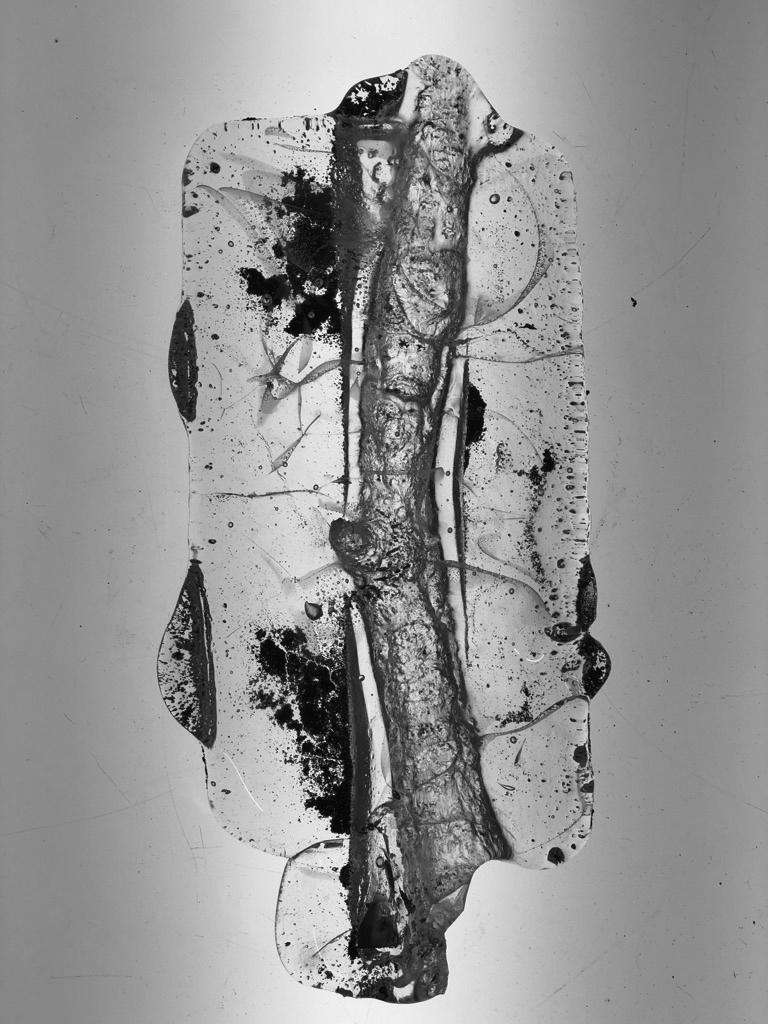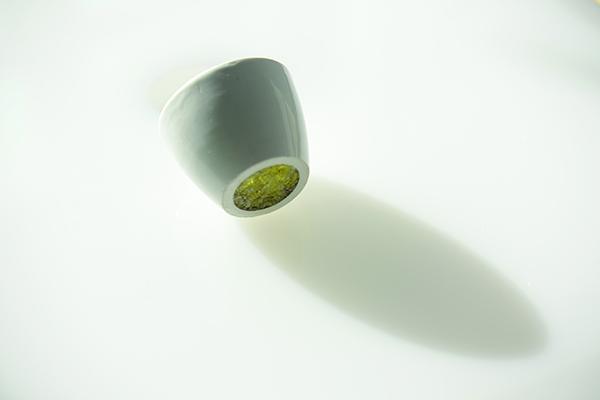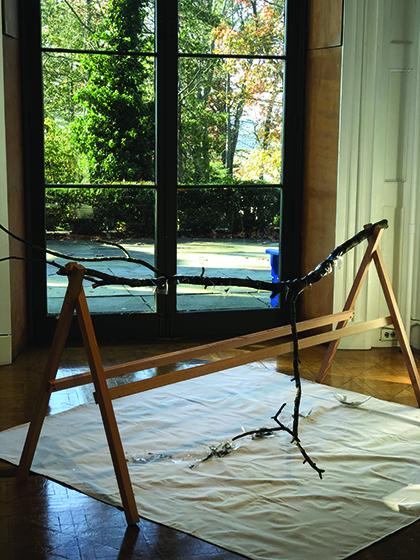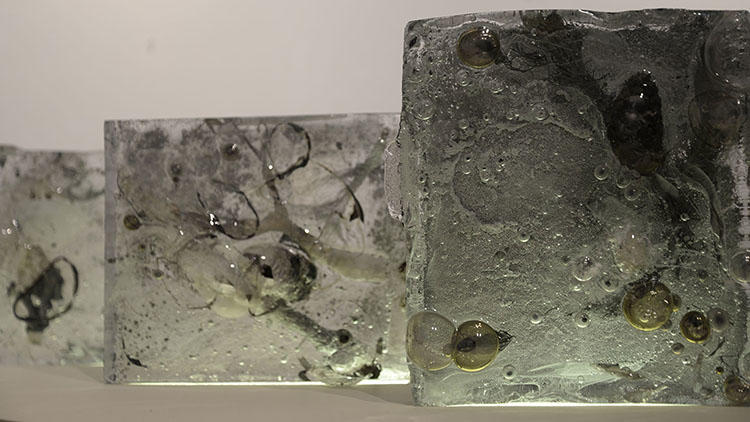Video file
Mandy Lee
Retelling a Landscape Through the Alchemy of Recasting
This project is an acknowledgment of reshaped landscapes while also understanding that this moment of time is only relevant to my own human lifespan and perspective. The work embodies unmet expectations when one confronts a memory landscape of their, or my, childhood. Specifically, I am discussing the chasm between reality and memory through a recent return to my childhood home in Colorado, and was met by two of the largest wildfires in the state’s history. This project takes a moment to digest that loss, of what was known, what was not, and can no longer be known: forests, trees, and other time-honed flora. The construct of mirage and memory are at play–both hold various truths in relation to distance between viewer and that which is viewed. Glass is used as a way to explore recasting based on the ability both to shape-shift and maintain a material memory. Studies include casting and recasting trees to explore various stages of transmutation from one material to another: adapting historic glass recipes that embody loss and creation; building protective (but futile) glass cocoons that suggest physical and metaphorical change; and employing Schlieren imaging to explore the role temperature plays in how “recasting” is perceived. I am exploring a feedback loop—a recasting—between creation and loss where material, time, place, and scale transform into different forms both physically and through memory. Recasting is the transmutation—or change from one material to another—which physically embodies a vast slurry of eras, material, histories, places, and scales.
Image

Burn out branch study
Glass, wood
4" x 4" x 10"
2019
Study of detail of glass in sand-cast molds; the wood burns out during the 2300-2400 degree Fahrenheit glass casting process
Image

Forest(fire) Glass
Ash from 2020 Cameron Peak and East Troublesome wildfires, sand, crucible
2" x 2" x 2"
2021
Forest glass began in the 1300’s in Germany and surrounding areas. It was a product from an abundance of forests—the wood ash from the furnaces acted as a flux that lowered the melting temperature of local sand. The forest glass production process was a feedback loop within itself; wood fueled the furnaces which melted the glass which could be melted by potash–the residue of one used to create another. (1) This resulted in a glass of hyper-local materiality; the glass is a cross-sectional interpretation of time scales, geologies, and species of that specific locale. The embodied losses of long-lost eras and the present are fused by fire. (2) Langhamer, Antonín. The Legend of Bohemian Glass: A Thousand Years of Glassmaking in the Heart of Europe. Czech Republic: TIGRIS, 2003.
Image

A Suspended Transmutation
Wood (unprocessed), wood (processed), cellophane glass
72" x 48" x 36"
2021
A recasting caught in progress; traces suggest what was versus what may become.
Image

Old Growth
Glass, north-central Colorado tree species (either Douglas fir, lodgepole pine, ponderosa pine, Engelmann spruce)
7.5" x 10" x 2"
2022
Each cast glass “book” contains the imprint of a tree species native to north-central Colorado. The organization of each block borrows from the tradition of cataloguing and describing species through herbarium practices where plants are described through identification markers such as reproductive mechanisms (cones, flowers), bark pattern, needles/leaves, and branching patterns. Certain tree species are not regenerating post-fire as they have been in the past and difficulties may increase in the future.
The Moment of Ignition
Chonos high speed camera, Douglas fir
2:39
2022
High speed footage of creating glass block volumes. Many many thanks to RISD Nature Lab Georgia Rhodes and Ben Gagliardi for taking this footage.
- Architecture
- Ceramics
- Design Engineering
- Digital + Media
- Furniture Design
- Global Arts and Cultures
- Glass
- Graphic Design
- Industrial Design
- Interior Architecture
- Jewelry + Metalsmithing
- Landscape Architecture
- Nature-Culture-Sustainability Studies
- Painting
- Photography
- Printmaking
- Sculpture
- TLAD
- Textiles
